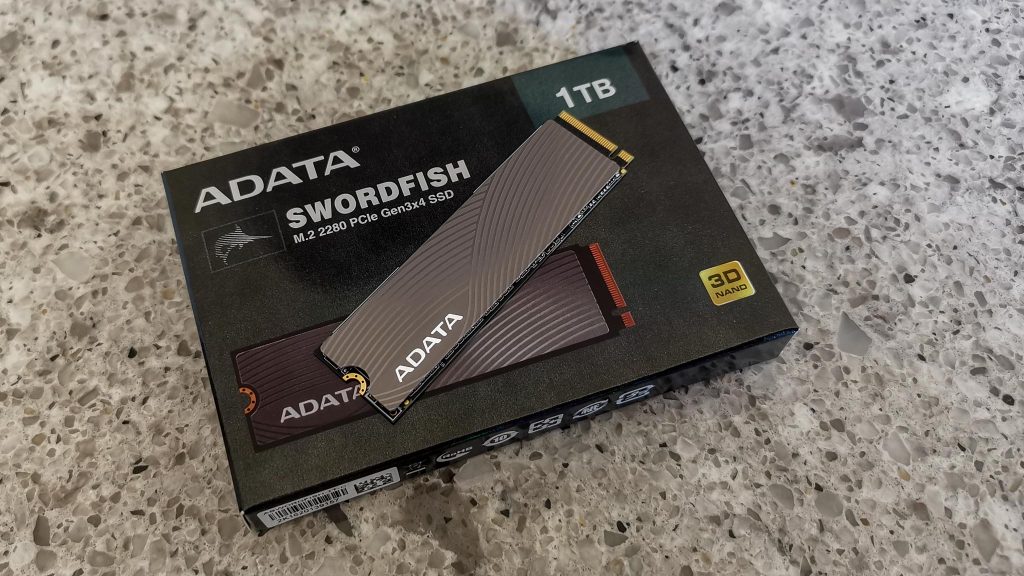There is no question that, unless there is a specific task requirement for a new SSD, the consumer looks at price. It’s no different than any other product really where a quality product and low price will always be a top seller. In the electronic world, SSDs haven’t really gained the notoriety that the hard drive has, which is unfortunate. Flash media has affected most of what we do daily. That, along with the price difference between a SSD and the all to familiar hard drive, has really held the SSD in the background even though the performance jump of the SSD is incredible. Until now.
ADATA has just introduced two new NVMe SSDs named the ADATA Falcon and the ADATA Swordfish. The Falcon speaks to performance and the swordfish value. The ADATA Swordfish is a M.2 NVMe PCIe 3.0 x 4 SSD that is available in capacities of 250GB, 500GB and 1TB and comes with a 5-year limited warranty. Specifications speak to read speeds of 1800MB/s read and write speeds of 1200MB/s with expected IOPS of around 180K read and write.
Taking a closer look at the ADATA Swordfish, we see that it is a single sided SSD, meaning that all components are on only one side of the SSD, and also that it is the only the second that we know of to incorporate a metal heatsink (or heat plate) on the SSD, as can be seen in the photo above. This heatsink is grey and black with the ADATA logo and affixed to the drive and its job is to move heat away from the SSD. If one were to try to remove this, it could not be replaced in the same fashion and the warranty would be forfeited.
On the bottom, we see the ADATA branding sticker which displays the information of this drive, and can validate that this black PCB is void of any components whatsoever on this side.
When the heatsink is removed, we get a look at the ADATA Swordfish components. It contains a Realtek RTS 5763DL entry level NVMe controller, along with four packages of ADATA branded memory, which ADATA will only reveal to be 96-layer TLC NAND flash memory. This is a DRAMless SSD as can be seen in this picture above. There is no physical chip that enhances performance as we might see typically in other SSDs. In DRAMless SSDs, there is a Host Memory Buffer (HMB) that is a feature of NVMe SSDs that stores the drive translation tables in host DRAM.
The ADATA Swordfish SSD is compatible with the latest ADATA SSD Toolbox which can be downloaded from the ADATA website here.
Also, a quick look at Amazon shows the ADATA Swordfish with a price of $39.99 (250GB), $64.99 (500GB), and $114.99 for the 1TB version we are reviewing today. At 12 cents/GB, this is one of the lowest priced SSDs on the market.
 The SSD Review The Worlds Dedicated SSD Education and Review Resource |
The SSD Review The Worlds Dedicated SSD Education and Review Resource | 

